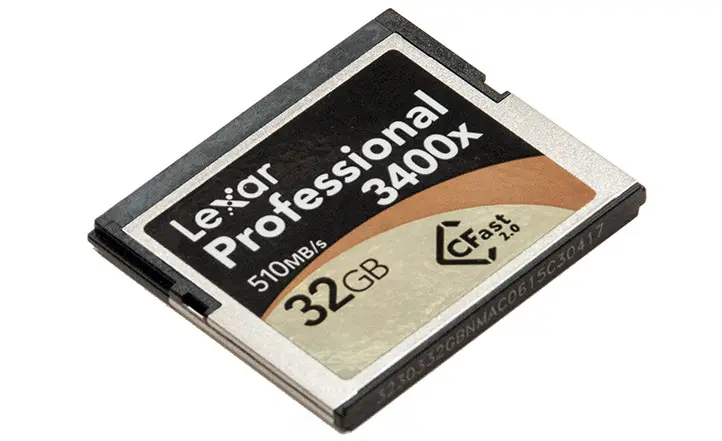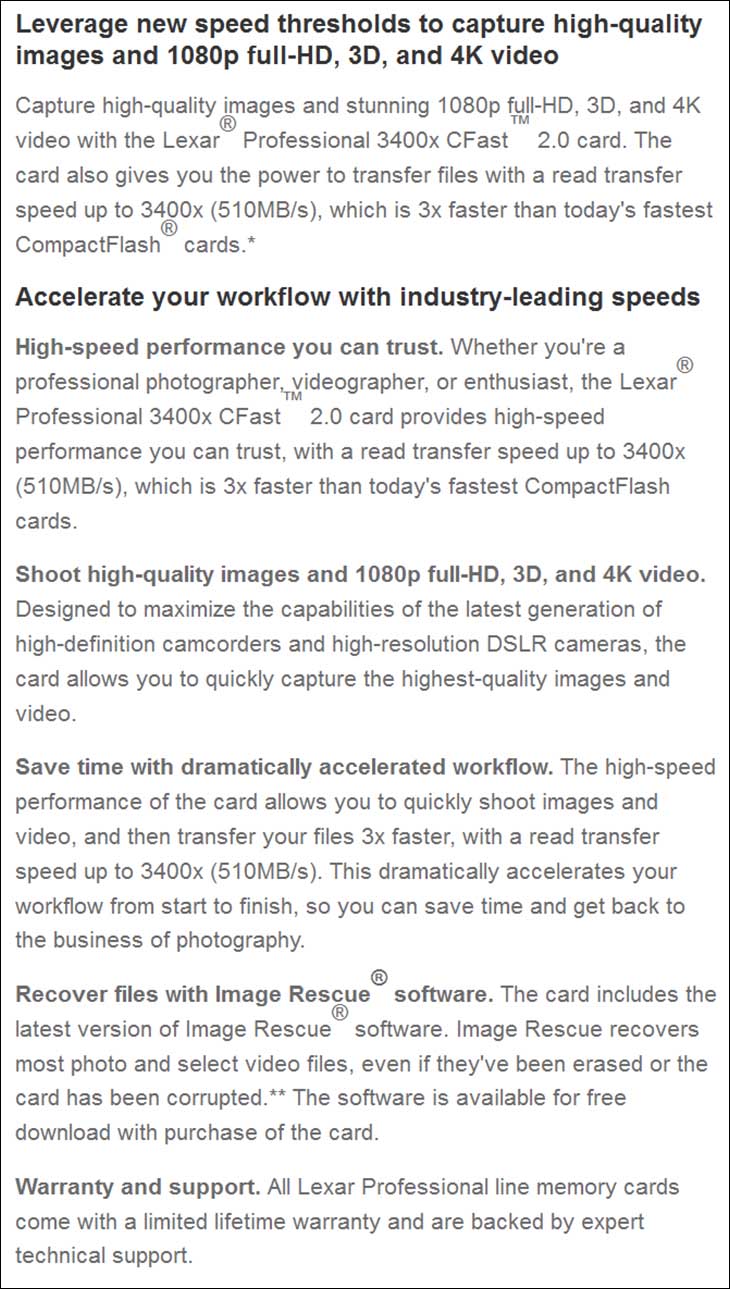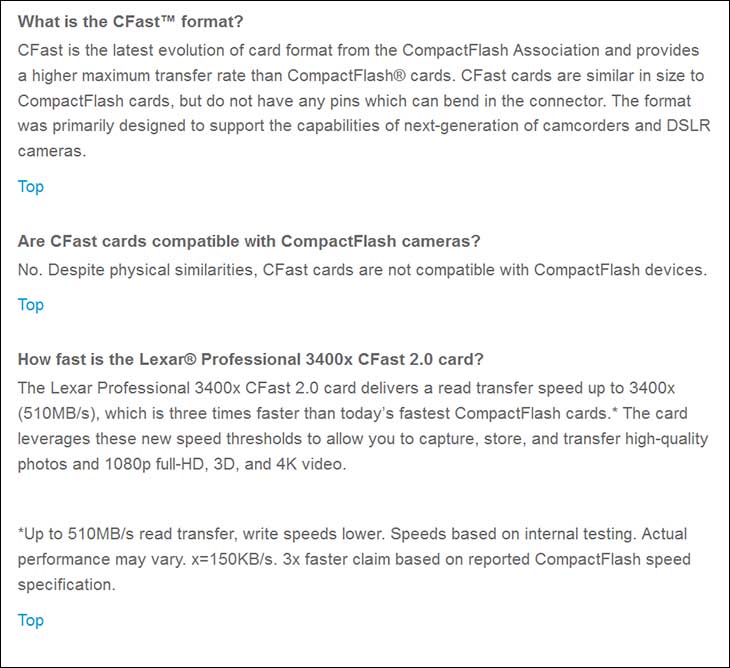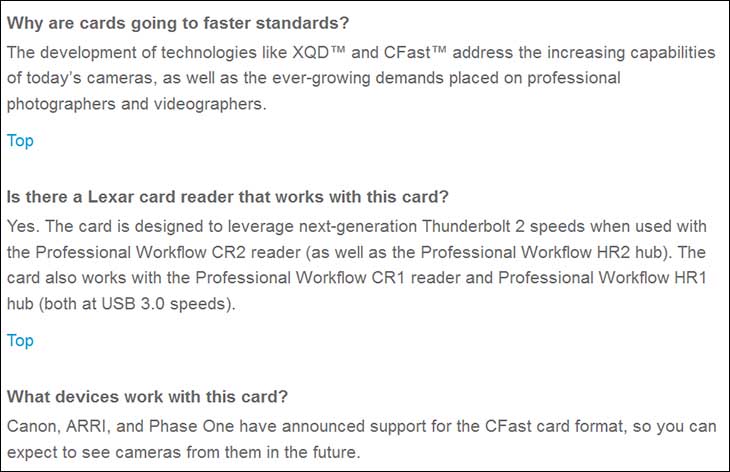Recently we took a long hard look at the Lexar 1066X professional CompactFlash card and walked away very impressed with the improvements Lexar had been able to do in a single generation. However, the writing is on the wall and CompactFlash is most likely coming up to end of life for professional end of the spectrum. It really is just a matter of time before CompactFlash’s design teams at Lexar and other places hit the point of no return and are unable to increase speed without increasing error rates at the same pace.
The CompactFlash Association knew that this day was coming and designed a Serial interface to replace the Parallel interface CompactFlash relies upon. This was meant to be a clean break with no backwards compatibility baked in. Unfortunately CFast 1.0 was not fast enough to justify the change over, and thus really did not catch on like it was hoped it would. Instead the inferior CompactFlash standard continued to dominate. The answer of course was to make CFast…faster and the end result is the CFast 2.0 standard. One of the newest CFast 2.0 models to be released is the Lexar 3400x Professional series and today we will be paying close attention to the 32GB version.
With an asking price of XX 32GB is right in that sweet spot of price vs capacity for most consumers and as such is one of the more popular capacities Lexar sales. This is why this capacity was chosen instead of a larger 64GB version. However with the exception of being ‘half’ the size the difference in performance should be minimal between the various capacities. At some future date we will investigate this further but for the time being we will focus on just the more popular size.
As the name suggests 3400x means that this card is rated for 319% of what the fastest CompactFlash card can do. Put another way, instead of topping out at 160MB/s this CFast 2.0 card cruises along at 510MB/s. However, increased read speed is only one part of the equation and as we will show in this review the Lexar 3400X Professional has the all-important write speed in spades. So buckle your e-seatbelts as we show you a glimpse of the (near) future of photography storage.















